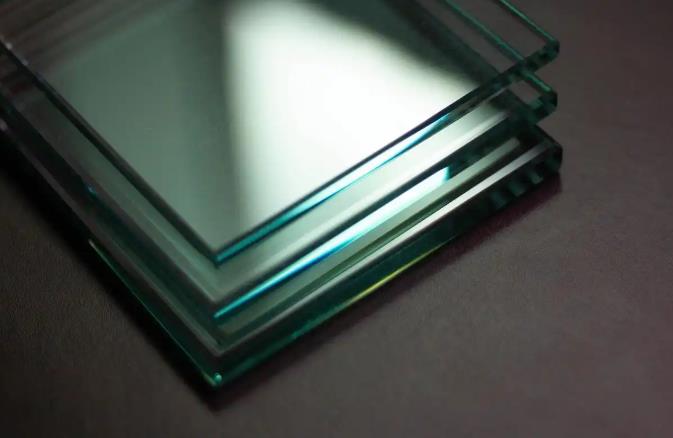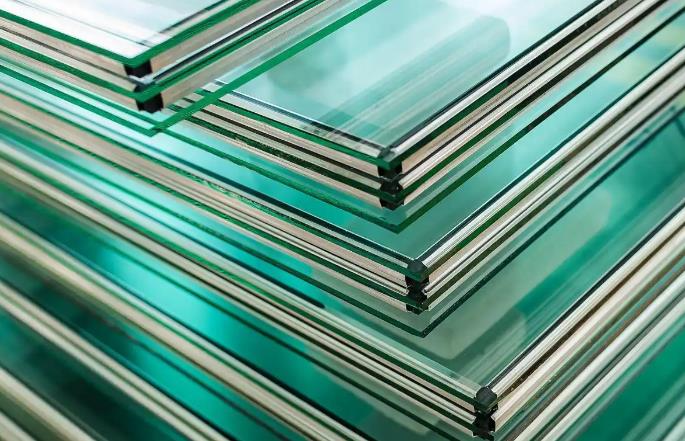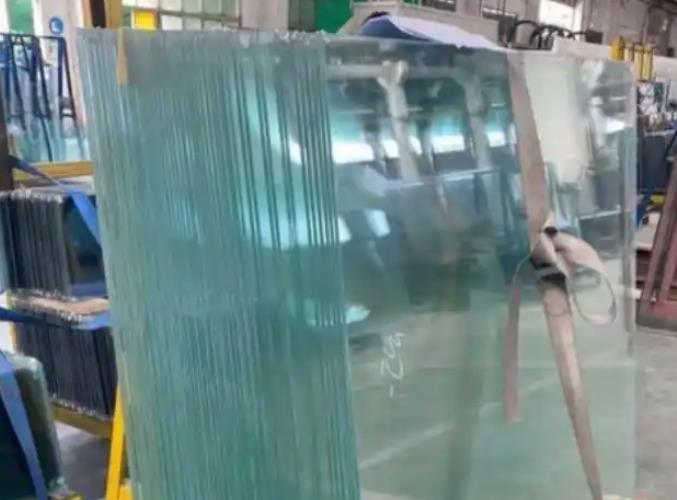
作者: 超级管理员 时间:2025-06-17 20:18:29 阅读:5
Glass, as an important material in modern architecture and home decoration, is widely favored for its transparency, beauty, and versatility. Tempered glass and semi tempered glass are two common types of processed glass, widely used in fields such as doors, windows, curtain walls, furniture, and automobiles. Although they are similar in appearance, there are significant differences in production processes, physical properties, safety, application scenarios, and costs.

1、 Definition of semi tempered glass and tempered glass
1. Tempered glass
Tempered glass is a safety glass that is strengthened by physical or chemical methods to create compressive stress on its surface and tensile stress inside ordinary glass. Tempered glass will break into small particles when subjected to external impact, reducing the risk of harm to the human body, and is therefore widely considered as safety glass.
2. Semi tempered glass
Half tempered glass is also strengthened by heat treatment, but its degree of strengthening is lower than that of tempered glass. The surface compressive stress of semi tempered glass is relatively small, and it does not form small particles when broken, but produces larger fragments, similar to the way ordinary glass is broken, but with higher strength than ordinary glass.
2、 Differences in production processes
1. Production process of tempered glass
The manufacturing process of tempered glass includes the following steps:
• Cutting and processing: Cut ordinary float glass into the required size, and perform edge grinding, drilling, and other processing.
Heating: Heat the glass to its softening point (approximately 600-650 ° C) to achieve a uniform high temperature state.
• Rapid cooling: The glass surface is rapidly cooled by high-pressure cold air, causing the surface to harden quickly and form high-strength compressive stress, while the interior forms tensile stress.
Result: The strength of tempered glass is 4-5 times that of ordinary glass, and the surface compressive stress is usually between 90-110 MPa.
2. Production process of semi tempered glass
The production process of semi tempered glass is similar to that of tempered glass, but the cooling rate and degree of strengthening are different:
Heating: Similarly, heat the glass to its softening point (approximately 600-650 ° C).
Slow cooling: When cooling, a slower air cooling speed is used to reduce the compressive stress on the glass surface, usually between 24-69 MPa.
Result: The strength of semi tempered glass is about 2-3 times that of ordinary glass, lower than tempered glass but still higher than ordinary glass.
3. Summary of process differences
• Cooling speed: Tempered glass cools faster and has higher compressive stress; Half tempered glass cools slowly and has lower compressive stress.
• Degree of strengthening: Tempered glass has a higher degree of strengthening, while semi tempered glass has a moderate degree of strengthening.

3、 Performance comparison
1. Strength and impact resistance
Tempered glass: high strength, strong impact resistance, and can withstand large external forces (such as heavy object impact). Its bending strength is about 4-5 times that of ordinary glass.
Semi tempered glass: Its strength is between ordinary glass and tempered glass, and its impact resistance is stronger than ordinary glass, but not as good as tempered glass.
2. Crushing characteristics
Tempered glass: When broken, it forms small particles without sharp angles (with a particle size of about 3-10mm), which has high safety and reduces the risk of harm to the human body.
Semi tempered glass: When broken, it forms large radial fragments, similar to ordinary glass, but with blunt edges. Its safety is better than ordinary glass but not as good as tempered glass.
3. Thermal stability
Tempered glass: It has excellent thermal stability and can withstand a temperature difference of about 200-250 ° C, suitable for high temperature or alternating cold and hot environments.
Semi tempered glass: It has good thermal stability and can withstand a temperature difference of about 100-150 ° C, but lower than tempered glass.
4. Self explosion risk
Tempered glass: Due to high internal tensile stress, tempered glass has a certain risk of self explosion (about 0.1% -0.3%), especially when containing nickel sulfide impurities.
Semi tempered glass: has lower internal tensile stress, significantly lower risk of self explosion compared to tempered glass, and higher stability.
5. Flatness
Tempered glass: Rapid cooling may cause slight deformation of the glass surface, with a slightly lower flatness than ordinary glass, especially on large glass.
Semi tempered glass: It has a slower cooling rate and better surface flatness, making it suitable for curtain walls or decorative glass that require high flatness.
4、 Differences in application scenarios
1. Application of tempered glass
Due to its high strength and safety, tempered glass is widely used in the following scenarios:
In the field of architecture: doors and windows, glass curtain walls, shower room glass, balcony guardrails for high-rise buildings.
In the home furnishing field: glass coffee tables, dining tables, cabinet doors, glass partitions.
In the automotive industry, there are side windows and rear windows.
Public places: glass doors in shopping malls and airports, escalator side panels.
——Features: Tempered glass is suitable for places that require high safety and impact resistance, especially in scenarios where collisions may occur or where debris splashing needs to be prevented.
2. Application of semi tempered glass
Half tempered glass is suitable for the following scenarios due to its moderate strength and low risk of self explosion:
Building curtain wall: Large glass curtain walls, especially those with high flatness requirements for building facades.
Indoor decoration: partitions, decorative panels, glass walls, requiring beautiful and flat scenes.
Laminated glass: Semi tempered glass is often used as a substrate for laminated glass, in skylights, canopies, or places that require wind resistance.
——Characteristics: Semi tempered glass is suitable for scenarios where high external flatness and stability are required, but safety requirements are slightly lower than tempered glass.

5、 Comparison of advantages and disadvantages
1. Tempered glass
advantage:
High strength and strong impact resistance.
When broken, small particles are formed, ensuring high safety.
Good thermal stability, suitable for environments with large temperature differences.
Disadvantages:
The risk of self explosion is relatively high, especially in low-quality glass.
The flatness is slightly poor, and there may be slight ripples.
• Processing restrictions: After tempering, it is not possible to cut or drill holes, and processing must be completed before strengthening.
2. Semi tempered glass
advantage:
Low risk of self explosion and higher stability.
Good flatness, suitable for large curtain walls or decorative purposes.
• Higher strength than ordinary glass, meeting certain safety requirements.
Disadvantages:
When broken, the fragments are larger and the safety is lower than that of tempered glass.
• Weak impact resistance, not suitable for high-intensity scenarios.
The thermal stability is not as good as tempered glass.
6、 Cost and price difference
1. Tempered glass: The production process is complex, the cooling equipment requirements are high, and the cost is high. Taking the market in 2025 as an example, the price of ordinary 6mm tempered glass is about 80-120 yuan/square meter, and the specific price varies depending on thickness and brand.
2. Semi tempered glass: The cooling speed is slower, and the process cost is slightly lower than tempered glass. The price is about 60-100 yuan/square meter, and the cost-effectiveness is relatively high.
3. Influencing factors: Glass thickness, size, processing complexity (such as curvature, coating), and market supply and demand will affect prices.
7、 Precautions for purchasing
1. Choose according to the purpose
High safety requirements: For shower rooms and balcony guardrails, choose tempered glass to ensure safety in case of breakage.
Appearance and flatness requirements: For large curtain walls or decorative panels, choose semi tempered glass to ensure aesthetics and stability.
Comprehensive requirements: Laminated glass (combined with tempered or semi tempered glass) can balance safety and aesthetics, suitable for skylights or scenes with high sound insulation requirements.
2. Check the quality
Certification mark: Select glass with 3C certification (China Compulsory Product Certification) to ensure compliance with national standards.
• Appearance inspection: Observe whether the glass surface is flat, without obvious ripples, bubbles, or scratches.
Brand selection: Prioritize well-known brands (such as Nanbo and Xinyi Glass) for more reliable quality.
3. Consider the installation environment
Temperature difference environment: Tempered glass is preferred for high temperature or alternating cold and hot environments (such as sunrooms).
Wind pressure environment: High rise building curtain walls need to consider wind pressure, and semi tempered glass combined with sandwich design is more suitable.
Safety requirements: Tempered glass is preferred in public places or children's activity areas.
4. Consult professionals
Communicate with designers or glass suppliers to clarify project requirements (such as size, thickness, usage) and select the most suitable glass type.
When making a purchase, it is necessary to weigh the advantages and disadvantages of both based on specific usage, budget, and environmental conditions. For scenarios with high safety requirements, tempered glass is the preferred choice; For scenarios with high requirements for appearance and stability, semi tempered glass is more suitable. By selecting reputable brands, checking quality certifications, and consulting professionals, it is possible to ensure that the appropriate glass type is chosen, adding safety and aesthetics to building or home projects.
QQ: 472264002
手机:13930300837
电话: 0335-3501234
邮箱: Zhanhyanrui3210@163.com
地址:Qinhuangdao Economic